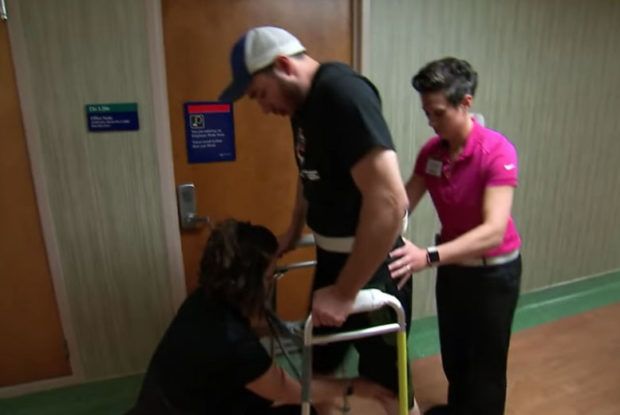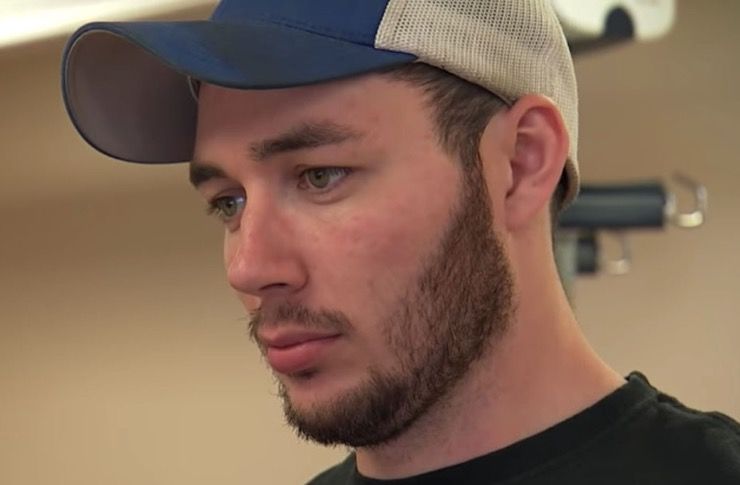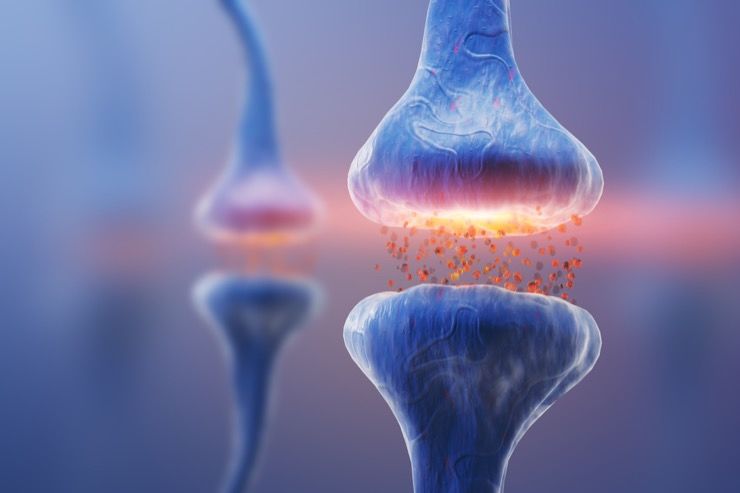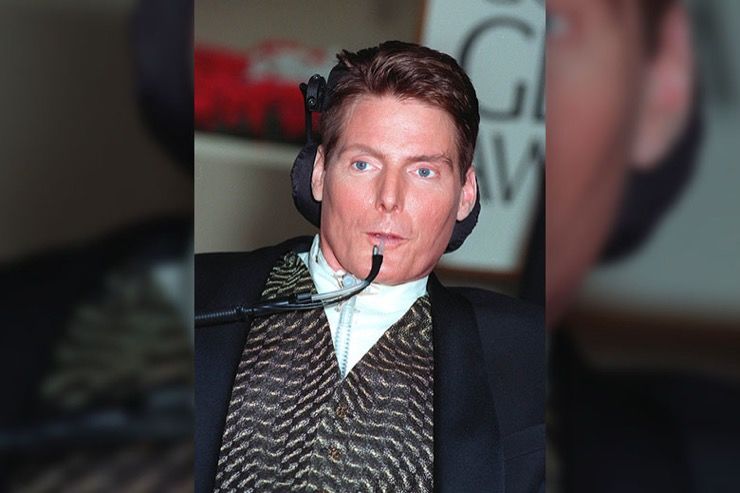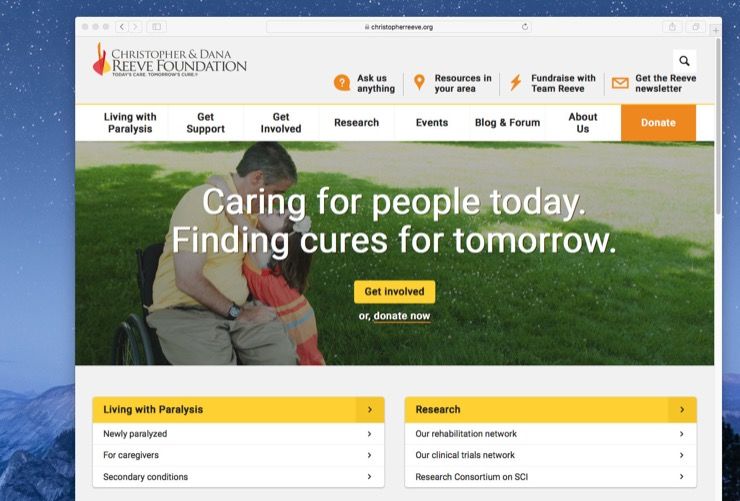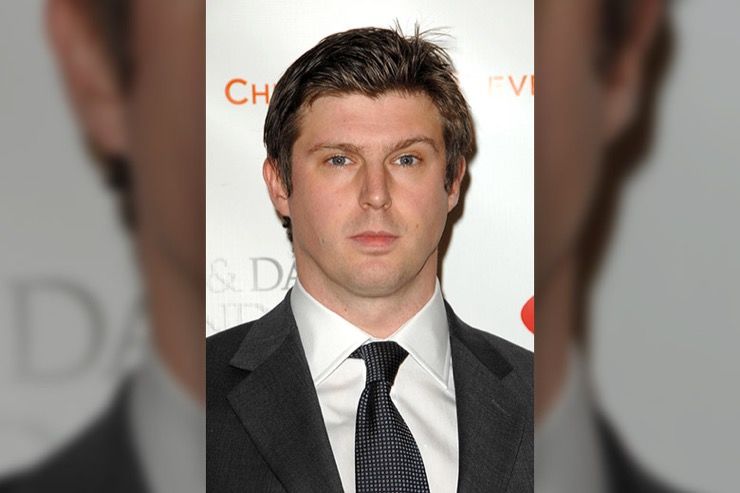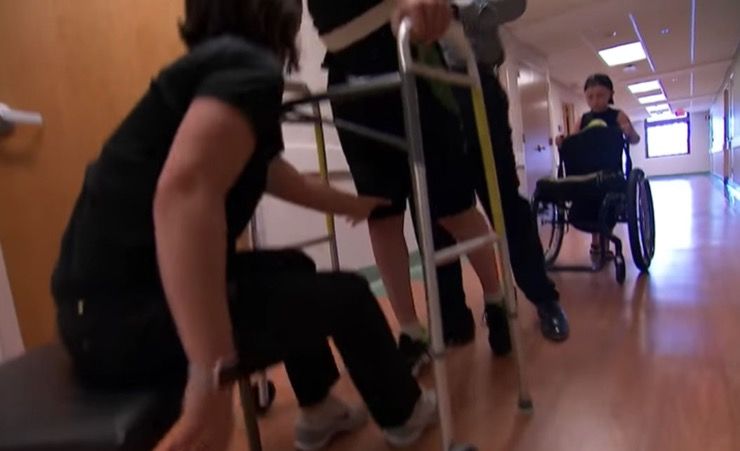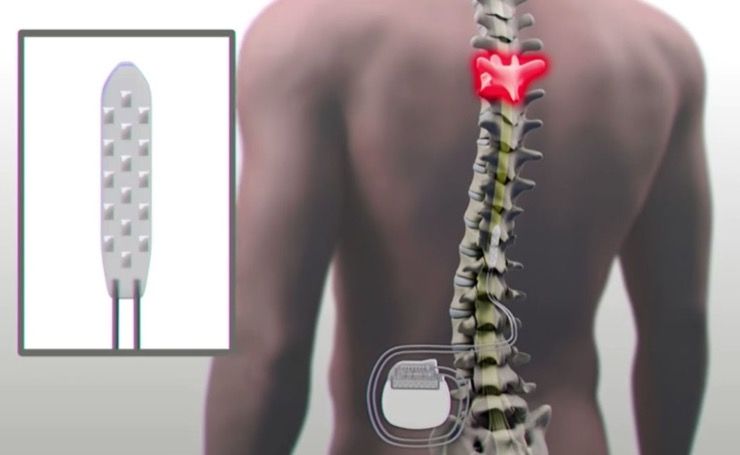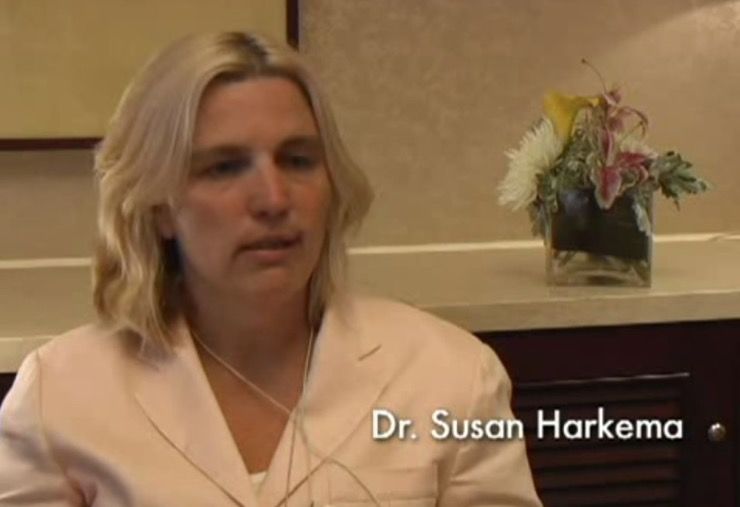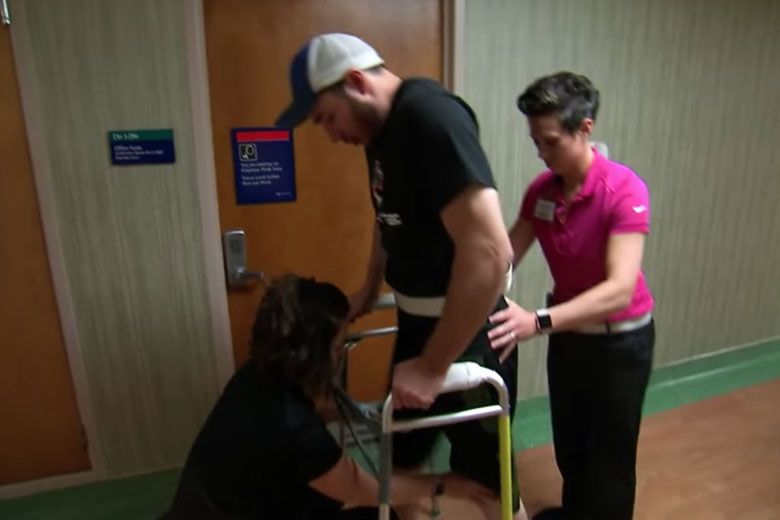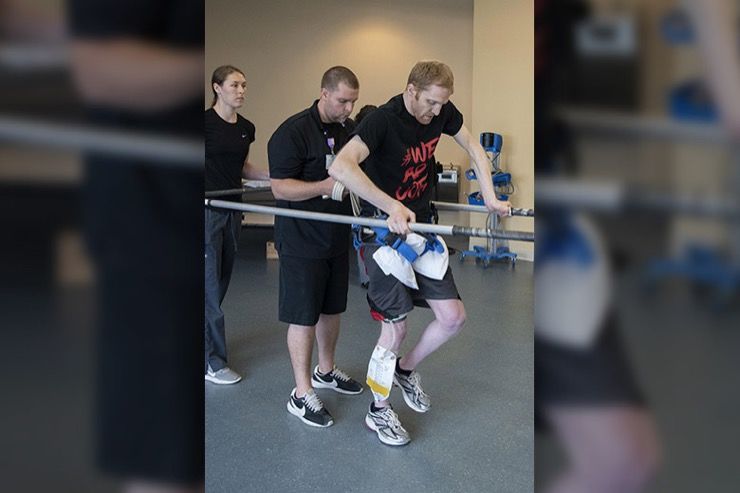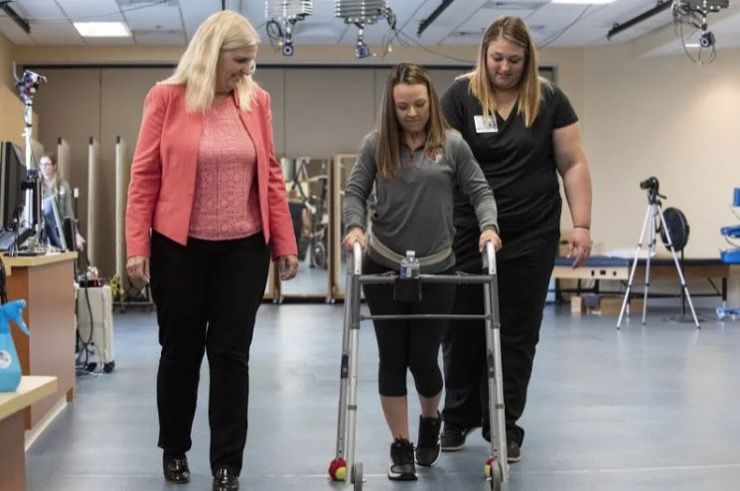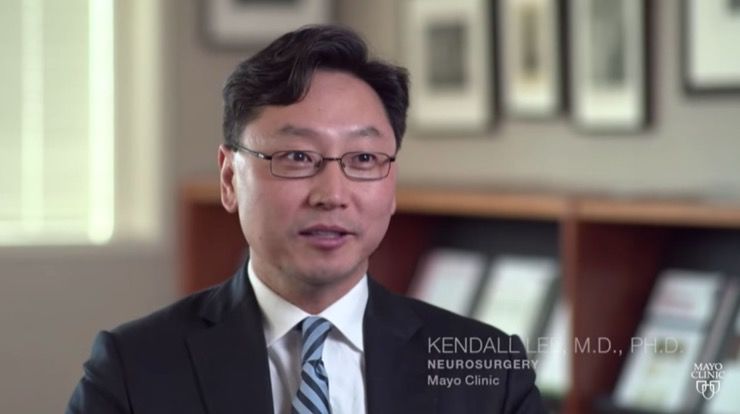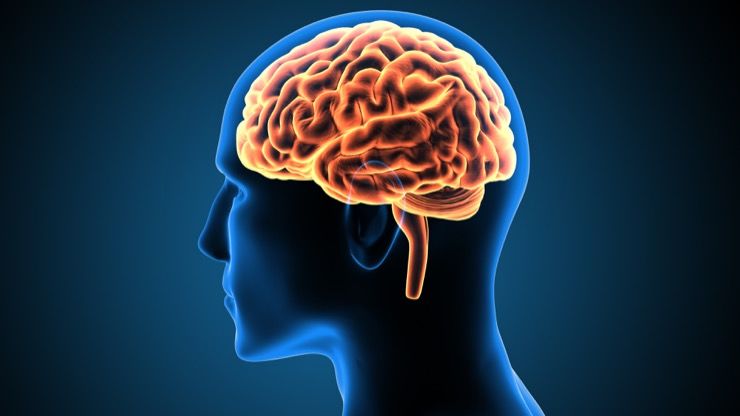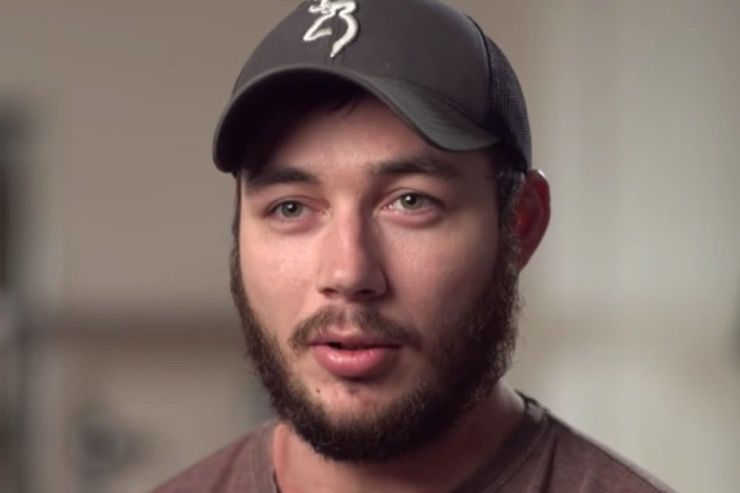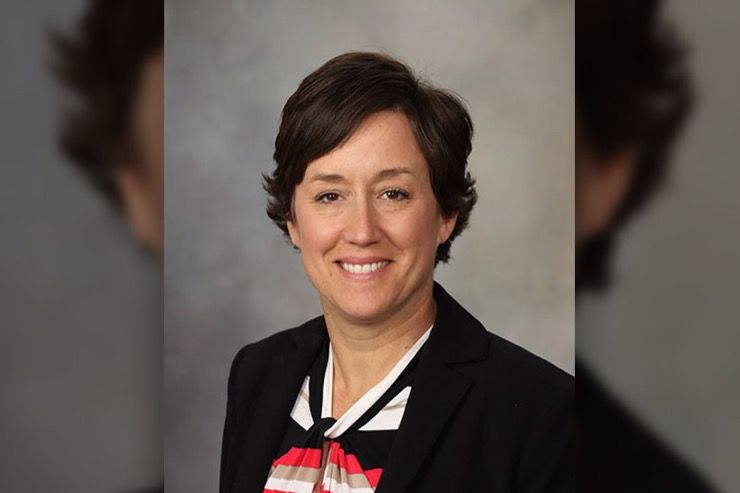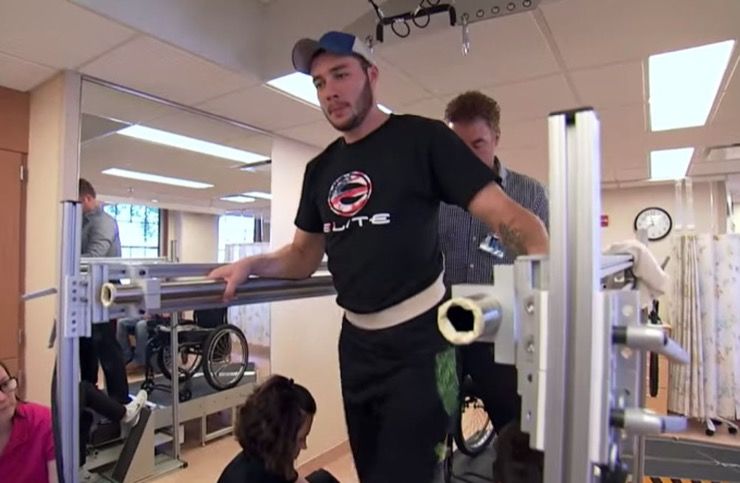When Jered Chinnock from Wisconsin got into snowboarding, he found it to be the most exciting and exhilarating hobby he had ever taken up. He was no pro, but Chinnock loved nothing more than venturing out on the slopes with his friends.
However, one fateful day and Chinnock would be paralyzed from an accident he had on his snowboard. He lost all movement and sensation below his mid-back and despite weeks of physical therapy, his condition didn’t improve. But, groundbreaking medical technology was about to change his life forever and make medical history.
Making Headlines
29-year-old Jered Chinnock was in the headlines for taking his first steps in five years after being paralyzed from the accident. The moment he walked made medical history when he was able to do so with the aid of nothing but a wheeled walking frame. This was thanks to some pioneering treatment called epidural stimulation, which is the “application of continuous electrical current to the lower spinal cord,” according to Wingsforlife.com.
Reconnecting Nerves
The whole point of the treatment is to reconnect broken nerve cells between the brain and spinal cord, essentially to retrain the brain to go back to its state before an injury. Intense rehabilitation exercises were also required to reactivate nerves and muscles, but when Chinnock now initiates movement, it happens for the most part.
Superman’s Son
When Christopher Reeve fell off his horse when he was out riding one day, the man who played Superman was paralyzed from the neck down. Reeve and his family were understandably devastated by the accident, and he spent the rest of his life in a wheelchair. His son Matthew who now lives in Sweden took particular interest in the story of Jered Chinnock.
No Hope
Matthew recalls that his father, who had the accident at the age of 42, was told by doctors at the time, “This is your wheelchair. Get used to it. You will not recover any mobility.” He said that if his father were still alive, he would be “ecstatic” about this amazing medical breakthrough as he was left with no hope of ever walking again. As Matthew said, according to a Mail Online report, “Nobody who is injured today should be told that because it’s not true.”
Strong Connection
The fact is that Reeve is partially responsible for the medical breakthrough thanks to the work of the organization he set up offering funding into curing spinal cord injury and improving the quality of life of people living with paralysis. The Christopher and Dana Reeve Foundation also funded the Mayo Clinic in Minnesota where Chinnock received his treatment.
Helping Others
Even though the technology came too late for his father, Reeve explained how he and his two siblings had been an integral part of the new process through their work at the Foundation. “A couple of years ago we made an announcement about our first four guys who were able to stand up,” said Matthew, who is currently the vice-chairman of the Foundation.
Watershed Moment
Reeve is proud of the work he has done in honor of his father. “This year, other patients of ours have been able to take steps, which is a truly remarkable watershed moment,” he told reporters. “It’s difficult for me not to get emotional when I see or hear about patients standing up out of their wheelchairs and taking steps. One of the earliest guys to receive epidural stimulation stood up to get married,” he added.
Matter of Time
Reeve also told reporters from Stockholm, where he lives with his wife and daughter, that it’s only a matter of time before this procedure becomes common practice. “I believe it is only a matter of years before innovative, technology-based therapies like epidural stimulation will become standard practice in the treatment and recovery from spinal cord injuries – and that patients like my father will walk again,” he said.
Walking Far
Amazingly, during one of Chinnock’s many physical therapy session at the Mayo Clinic, the patient was able to walk the equivalent of the length of a football field. Chinnock told the AP: “The walking side of it isn’t something where I just leave my wheelchair behind, and away I go,” he said. But he added, “there is the hopeful side of, maybe I’ll gain that – where I can leave the wheelchair behind, even if it is to walk to the refrigerator.”
Really Excited
Medical experts are very excited about this breakthrough in their quest to help people who have suffered from spinal cord injuries. As Dr. Cristina Sadowsky from the Johns Hopkins University said, “I’m really excited about this.” However, she cautioned that while the procedure tapped into “residual connections that are not being used,” she added that, “not everybody who has a similar injury will respond the same.”
New Approach
While numerous approaches have been tried in the past with little success, this new procedure has seen at least three patients up and walking, using their own brain power. Due to circuits of nerves below the injury site being dormant, they are still technically alive. When electrical current is applied to them, in customized patterns, those circuits can be “awoken.” Along with intense rehabilitation, the rusty connections can work once again in some cases.
Reteaching the Spine
As Professor Susan Harkema from the University of Louisville, who co-authored a study in the New England Journal explained, “Recovery can happen if you have the right circumstances,” she said. Noting that the spinal cord “relearns to do things, not as well as it did before, but it can function.” Other people also feel the study offers hope for people faced with paralysis.
Success Story
Chinnock and the team who treated him had no idea how well he would react to the new procedure. After 43 weeks of intense physical therapy and stimulator adjustments, his knees and hips were positioned to help him stand on a treadmill. But eventually, by watching in a mirror, Chinnock learned to move his legs and propel himself forward with a walker. “It’s very much a thoughtful, intentional movement,” he said.
Other Patients
Chinnock isn’t the only patient to be helped by this new procedure. Jeff Marquis from Louisville was also able to walk again as a result of the special implant. Another patient, 23-year-old Kelly Thomas from Florida was another success story, who was able to walk of her own accord thanks to the treatment she received.
Changing Lives
Medical experts and patients alike are so excited and hopeful about this new procedure as it’s the first time many people have been offered the hope of walking again. As Thomas explained about her situation: “One day we were walking and they were helping me as usual, and then they stopped helping me and I took maybe three or four steps in sequence,” she said. “My eyes got teary and I was like, ‘Oh my god, that just happened, I just took steps.'”
Early Stages
Neurosurgeon Dr. Kendall Lee, who co-led the team from the Mayo Clinic in Rochester, explained that while the research is certainly exciting, it is in the early stages at this time. “It’s very exciting, but still very early in the research stage,” he said. Lee also explained the importance of teaching patients to stand on their own two feet without the assistance of doctors the whole time.
Patient’s Mind
As the patient needs to relearn and train their brain to walk once again, it’s vital that they have plenty of mental determination as well as physical. “The reason why this is important is because the patient’s own mind, thought, was able to drive movement in his legs. Just as important is that we were able to get him to stand independently and take his own steps,” Lee said.
Way to Go
While it’s great news for Chinnock, he was open about the fact that he still has a long way to go when it comes to walking completely independently. He explained how hard he has worked to reconnect his brain to his spine and how he has enjoyed a lot of success in his endeavors. But doctors are still erring on the side of caution when it comes to offering the treatment to patients, and for good reason.
Establishing Connection
While doctors are excited about the breakthrough, they are still very cautious. The Mayo Clinic team believes that the key to success may lie in residual nerve fibers keeping an open channel of communication with the brain. As co-principal investigator, Dr. Kristin Zhao, director of the Mayo Clinic’s Assistive and Restorative Technology Laboratory said, “Now I think the real challenge starts, and that’s understanding how this happened, why it happened, and which patients will respond.”
Showing Promise
Just around 25 weeks after the operation, Chinnock no longer needed a harness to walk and was showing real promise. Over the course of a year, he achieved some amazing milestones including a 102-meter walk as well as walking continuously for 16 minutes. He can stand and walk whenever he wants although he still requires the use of a wheeled walking frame for extra support.
